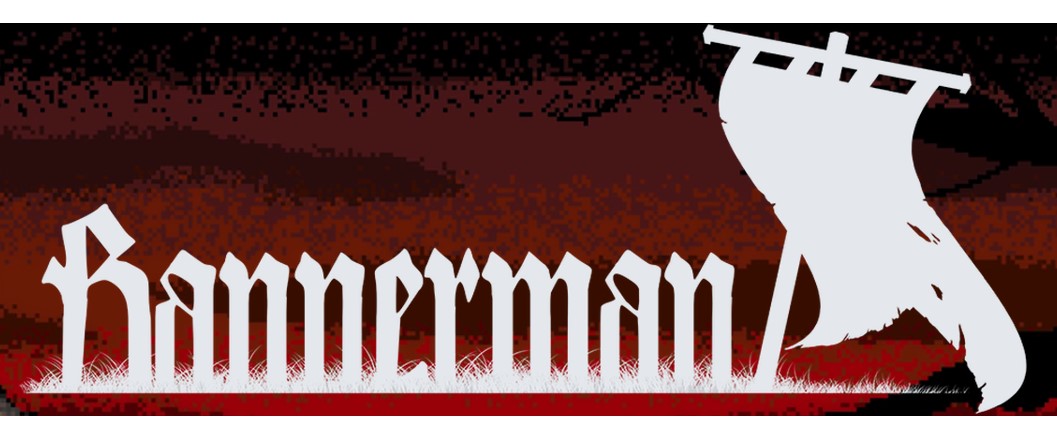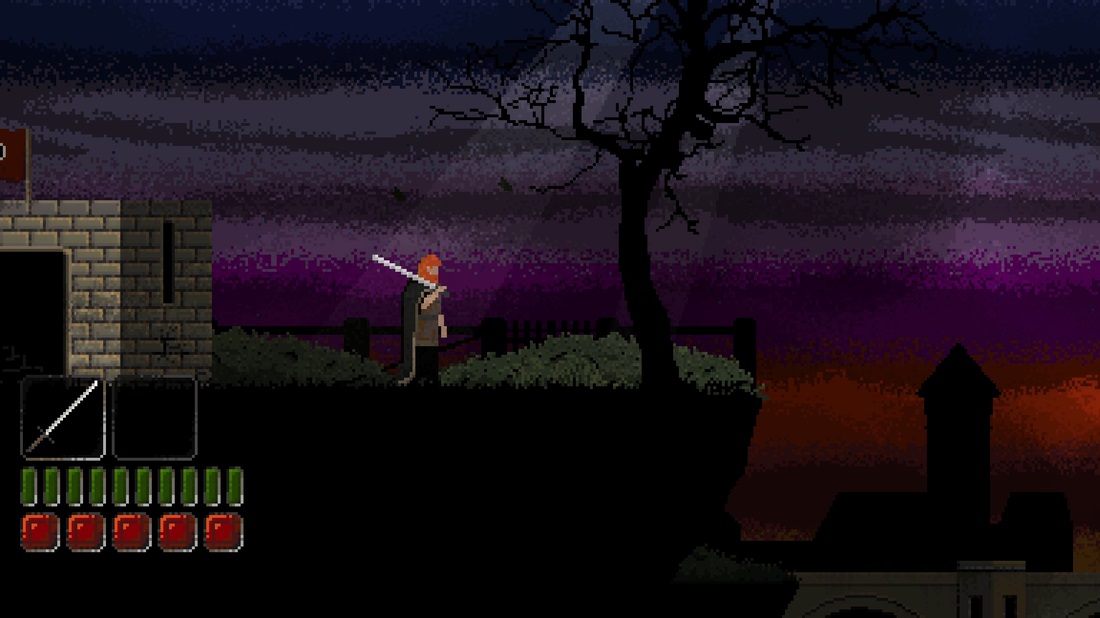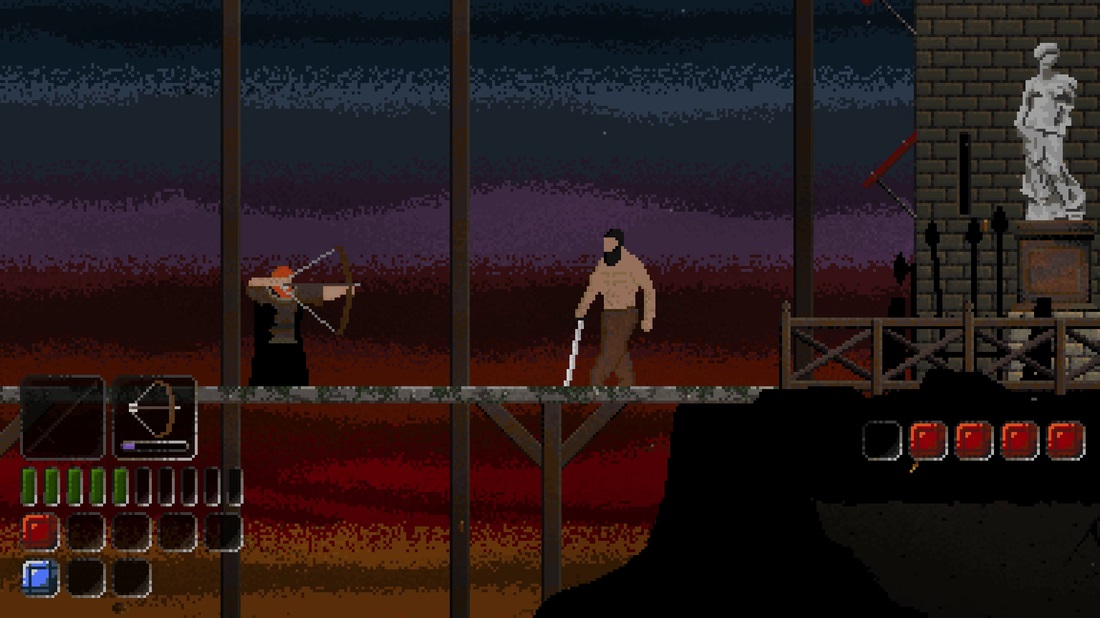Lately, many games have come out that try to capitalize on the success of the Dark Souls franchise, and many outlets praise or condemn those games based on that description alone. When I’ve tried to explain exactly what Bannerman is to friends, I’ve leaned on the term “2D Dark Souls” — but honestly, that’s unfair to the game.
I could condense the game down to that phrase, but it feels hollow. Bannerman is a dark, brooding game, and it wants you to think about your actions, all while it demands you to continue onward — parrying, blocking, and dodging attacks from its myriad enemies. Unlike Souls, you don’t fight skeletons, undead, dragons, or the like. Your opponents are almost exclusively people, and the fights are rarely something other than 1-on-1 combat.
Combat is where Bannerman shines. The game teaches you how to change from high to low stance, how to use heavy or fast attacks, how to stun your opponent with a punch, and how to dodge quite early on. You’ll need every option you have in the game to survive, because the enemies are even more brutal than you are. And trust me, you are pretty brutal; chopping up enemies with wide arcs of your two-hander sprays blood in a convincing — and slightly disturbing — way. In a realm where I’ve become mostly immune to the violence on display in video games, I couldn’t help but feel bad splitting some hapless soldier in two, just because he was in my way.
Bannerman asks you to make some moral decisions on your way, including rescuing a deserter (or not), and pursuing other side objectives before heading screen right to your ultimate goal. The game does a great job offering these side objectives without telling you that you need to go find them. Where an open-world game would hold your hand with on-screen waypoints and a giant overhead map with detailed markers, Bannerman slaps your reaching hand away, telling you to “figure it out”.
The game is slow, but in a good way. The hero’s normal, almost plodding pace gives you ample opportunity to take in the beautiful visuals, and plenty of time to evaluate your next opponent. Combat is also a slow affair at first; you have the opportunity to size up your opponent, analyze their attacks, change stances, ready to parry or dodge, and set yourself up for a killing blow. I never felt the need to button mash, or that I had to have the reflexes of a mongoose on speed to keep up with the game.
Everything is about timing in Bannerman. Dodge at the right time to avoid that arrow, punch the archer right now to stagger him, and follow up with a heavy swing to take him out.
Combat is executed beautifully; it’s the core of the game, and it’s easy to tell the developers put lots of time and thought into it. As you go through the game, more options become available; secondary weapons like a one-handed sword, shield, and bow, different combat maneuvers, and choices to make that affect how you play. Do you go for more armor, or more stamina?
Bannerman could be called a 2D side-scrolling Dark Souls, but it achieves more than just a different take on the genre; it is no clone, and plays much differently. It is a difficult, deep, beautiful game that keeps you engaged with challenging combat and fluid visuals. Bannerman is available through Steam and the Bannerman website.
[Note: The developer provided a copy of Bannerman for the purpose of this review.]









Published: Oct 4, 2017 12:48 pm